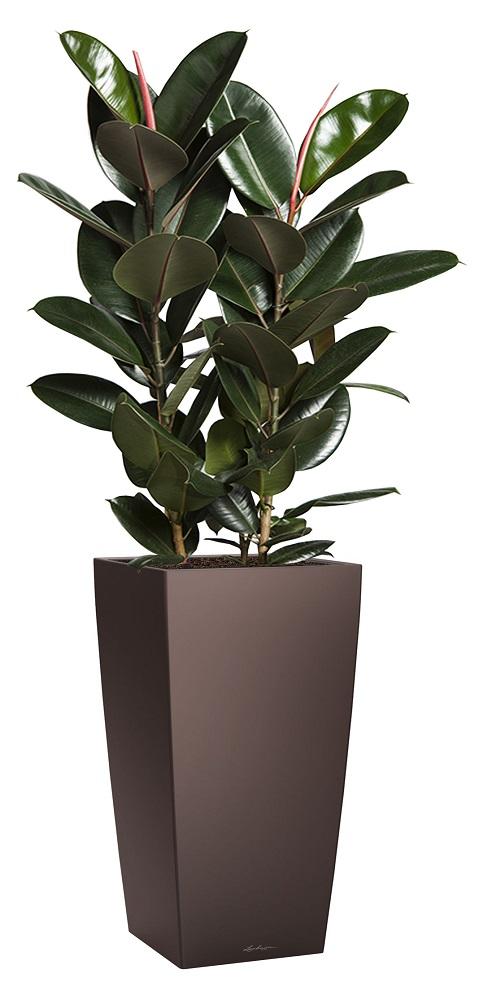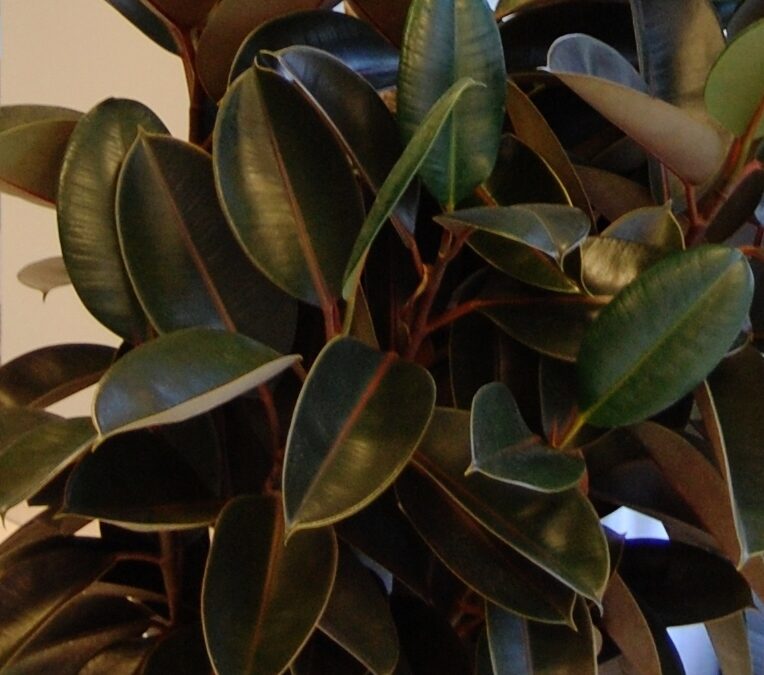The Resilient Rubber Plant: A Great Choice for your Home or Office
When it comes to transforming your living or working space into a lush sanctuary, the Rubber Plant (Ficus elastica) stands as a reliable and attractive choice. Native to Southeast Asia, this evergreen tree has charmed plant enthusiasts worldwide with its glossy leaves and forgiving nature. Let’s dive into why the Rubber Plant deserves a spot in your home or office and how to care for it.
Appearance and Appeal
The Rubber Plant’s broad, leathery leaves are its most striking feature. These leaves can vary in color from deep green to variegated patterns with splashes of white, cream, and even pink. The plant’s upright growth habit adds structure and height to any room, making it a stunning focal point.
Care Essentials
One of the many reasons the Rubber Plant is beloved by both novice and seasoned plant parents is its ease of care. Here’s how to keep your Rubber Plant thriving:
- Light: Rubber Plants love bright, indirect light but can also tolerate lower light conditions. Avoid placing them in direct sunlight, as this can scorch the leaves.
- Water: Water your Rubber Plant when the top inch of the soil feels dry. Overwatering can lead to root rot, so it’s better to let the plant dry out slightly between waterings.
- Humidity: While Rubber Plants can adapt to average household humidity, they do appreciate occasional misting or a nearby humidifier, especially during winter months.
- Temperature: Keep your Rubber Plant in a warm environment, ideally between 60-75°F (15-24°C). Avoid sudden temperature drops and drafts.
Growth and Maintenance
Rubber Plants can grow quite tall, reaching heights of up to 10 feet indoors. To encourage bushier growth, prune the plant by cutting just above a leaf node. This will promote the development of new branches.
Every few years, repot your Rubber Plant to give it more room to grow and refresh the soil. Use a well-draining potting mix to prevent waterlogged roots.
Benefits of Rubber Plants
Beyond their visual appeal, Rubber Plants are known for their air-purifying abilities. They can help remove toxins such as formaldehyde from the air, contributing to a healthier indoor office environment.
Additionally, caring for plants like the Rubber Plant has been shown to reduce stress and improve overall well-being. Watching your plant thrive can provide a sense of accomplishment and connection to nature.
The benefits of indoor plants can extend to your office environment too. Consider hiring a professional interior landscape contractor to advise you on the best plants for the office.
Troubleshooting Common Issues
- Yellowing Leaves: This can indicate overwatering or poor drainage. Ensure your plant’s pot has drainage holes and allow the soil to dry out between waterings.
- Brown Edges: Brown leaf edges can be a sign of dry air. Increase humidity around your plant with a humidifier or by misting the leaves.
- Dropping Leaves: This can happen due to sudden changes in light or temperature. Gradually acclimate your plant to new environments and avoid drastic changes.
In conclusion, the Rubber Plant is a resilient and rewarding houseplant that brings both beauty and health benefits to your home or office. With its striking appearance and easy-going nature, it’s no wonder this plant remains a popular choice for indoor gardeners. So, why not add a Rubber Plant to your collection and enjoy the many perks it has to offer?

